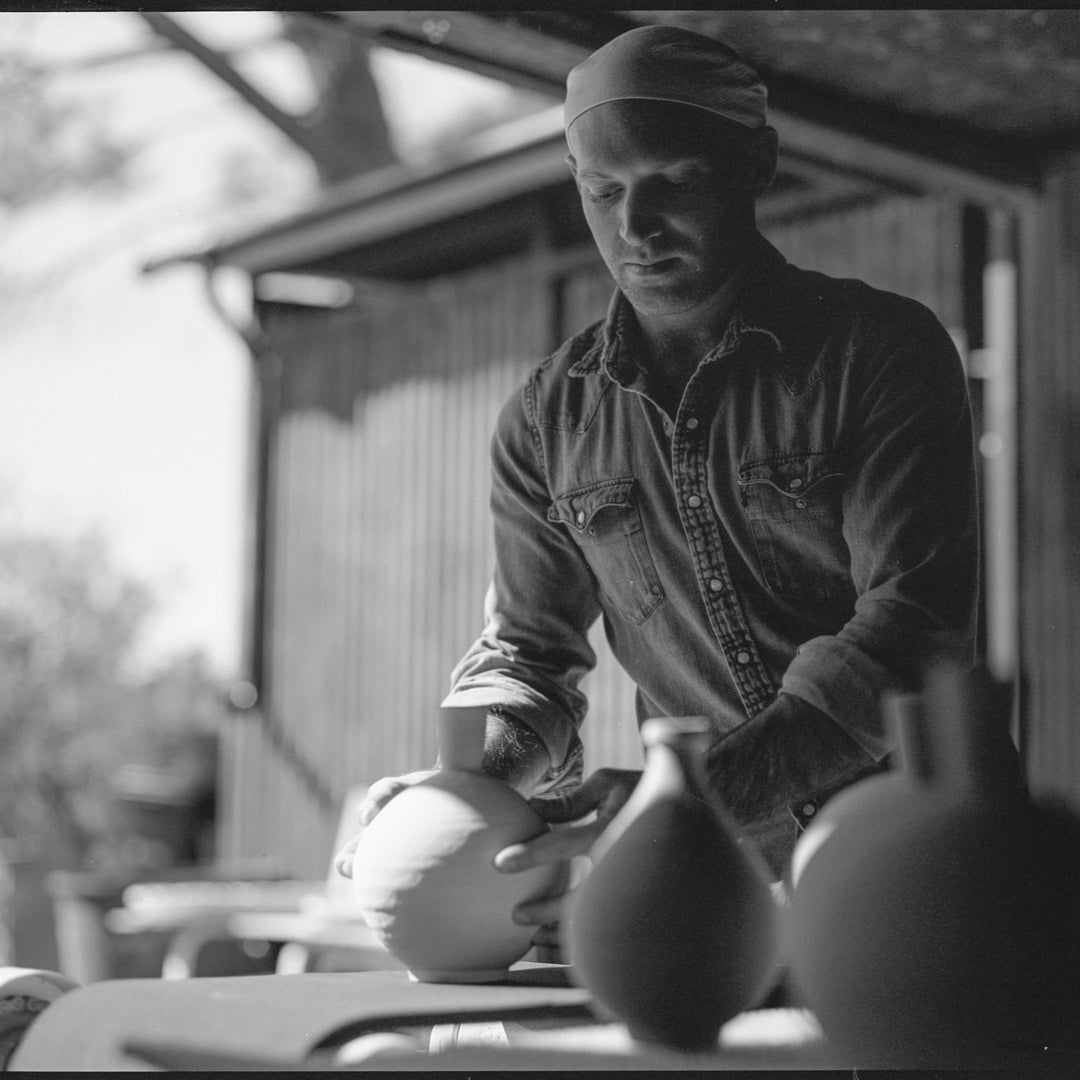Manufactory
Marco Minetti

About the object: Marco Minetti's Buncheong vase has a diameter of approx. 35 cm and is approx. 32 cm high. It is handbuilt from foraged clay from the Sierra Nevada using Marco's coiling technique and coated with a glaze of kaolin slip, almond wood ash and feldspar. The vase has a beautiful greenish color and a patina that will continue to develop with use. It is waterproof and suitable for individual flowers, bouquets or branches. Or even without everything as a beautiful object.
Manufacturing process: This vase is constructed by Marco Minetti on the Korean kick-wheel from foraged clay using the coiling technique and the paddle, as used for the production of onggis. The vase is poured with kaolin slip and coated with an almond ash and feldspar glaze. Kaolin is also known as porcelain clay and is an important raw material in ceramics. The fine white clay material begins to sinter at high firing temperatures, i.e. it forms a solid compound without melting completely and plays an important role in determining the color and strength of the end product. Almond ash acts as a flux and helps the glaze to melt at lower temperatures, while feldspar, as the main component, forms a glassy matrix and also acts as a flux. The combination of materials can create a unique glaze with different colors and textures depending on the specific proportions and firing process. In this particular case, the surface is greenish and very exciting!
We offer reliable shipping for our products to various destinations. Here are our shipping options:
Germany:
EU countries:
Switzerland: Information regarding transportation costs to Switzerland can be found here.
Please note that the stated delivery times are estimates and may vary depending on the destination and current circumstances. We are always working to get your orders to you as quickly as possible.
For further information or special inquiries about shipping, please do not hesitate to contact us. to contact. We are happy to answer your questions.
- Marko Minetti objects should be cleaned by hand if necessary. Use clear water or a maximum of gentle cleaning agents and no abrasive sponges. Marko Minetti tableware and teaware is food-safe, but should not be used in the microwave or oven.
- Dry the object carefully after cleaning to avoid water stains.
- Ceramic pots can be rougher on the underside than pots made of other materials. We therefore recommend protecting sensitive surfaces on which the jar is to be placed from scratching if necessary.
Marco Minetti is a Californian ceramic artist who works with local clay. Attracted to the large fermentation vessels known as "onggi" and the technique of making them, Marco dedicated himself to learning the spiral and paddle technique in Korea as an apprentice to Kwak Kyungtae for over five years. As part of his training, Marco spent time in Jingdezhen, China, as well as in several workshops in Japan. After extensive studies of Korean turning methods and "Buncheong", the Korean influence became and remains a strong inspiration for Marco's work.
The Buncheong method of placing a white engobe over darker forms is both challenging and liberating, capturing the energy and mindset of the artist in the moment of creation. Collecting and working with clay, minerals and ash while reinterpreting ancient forms becomes an opportunity to keep in touch with nature in a fresh way. Marco Minetti strives to maintain this connection through his evolving
developing work both in large-scale forms and in tableware and teaware.





















